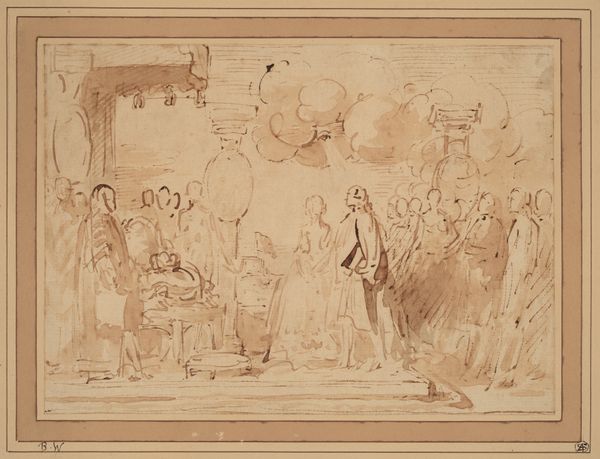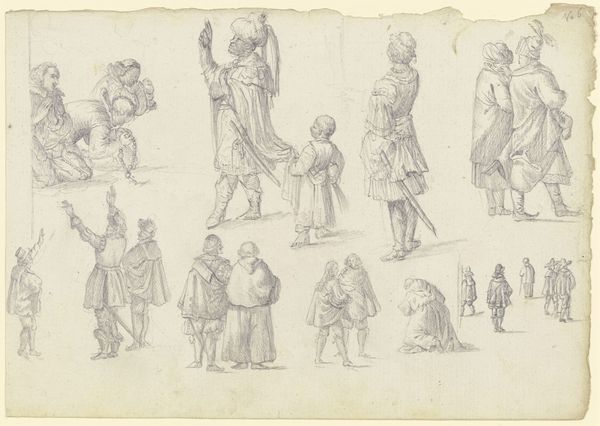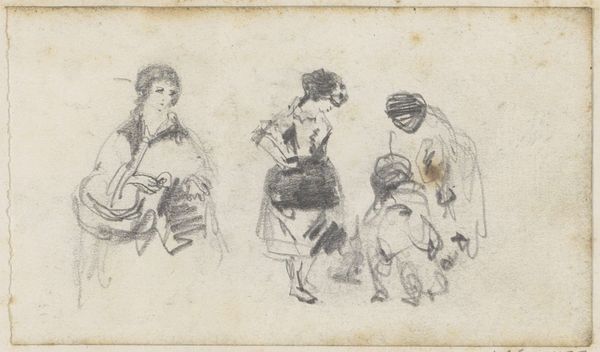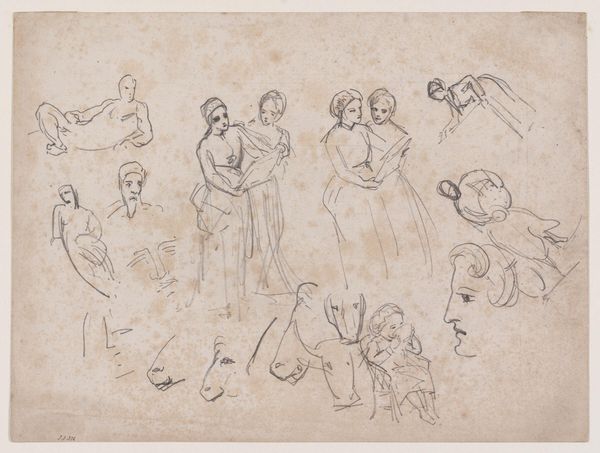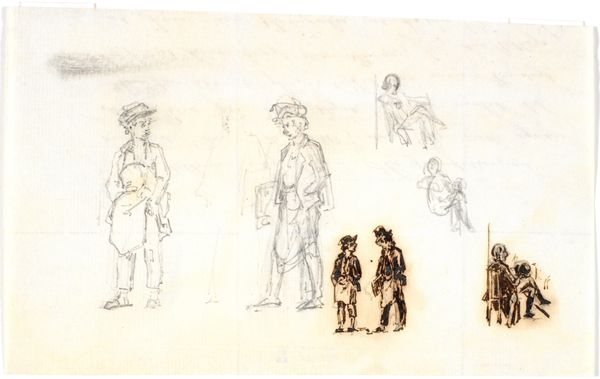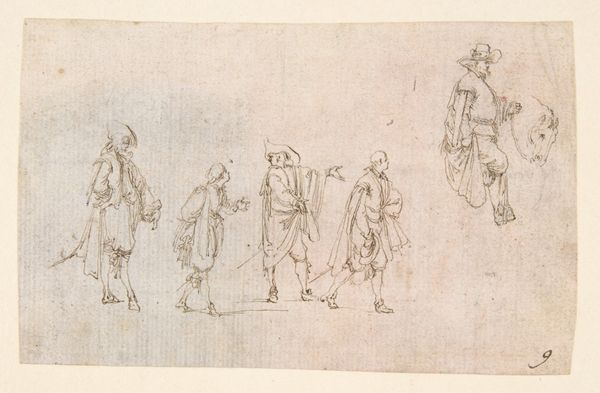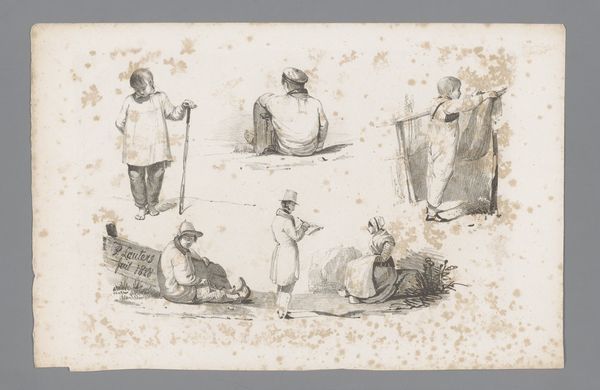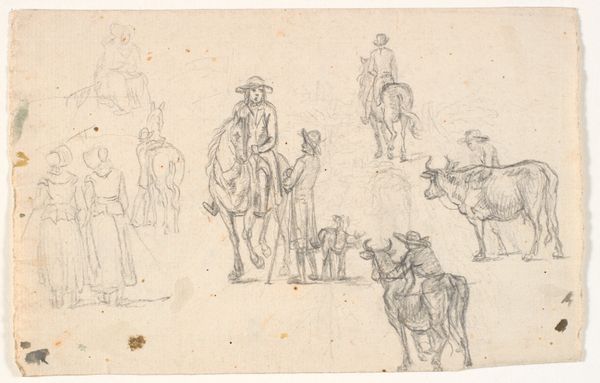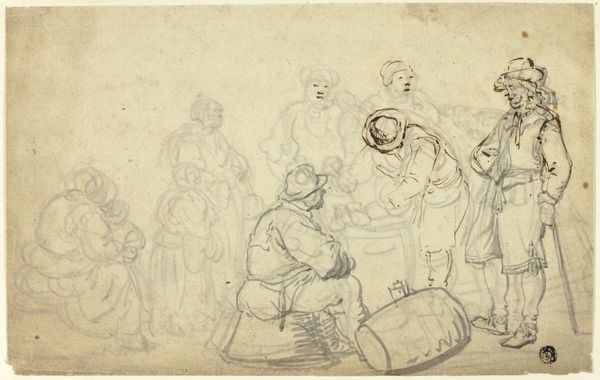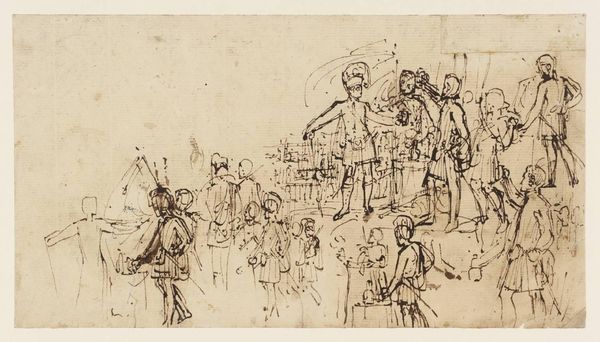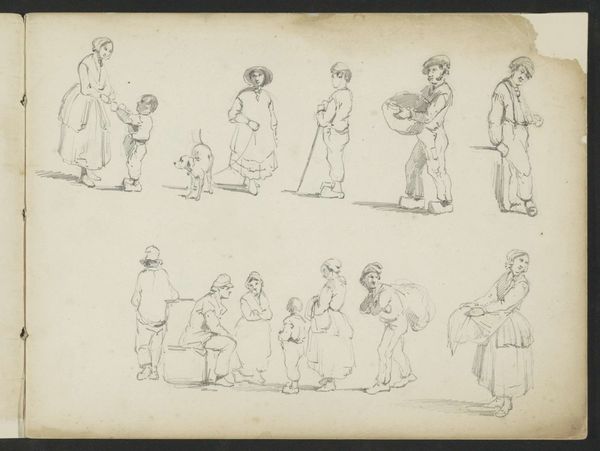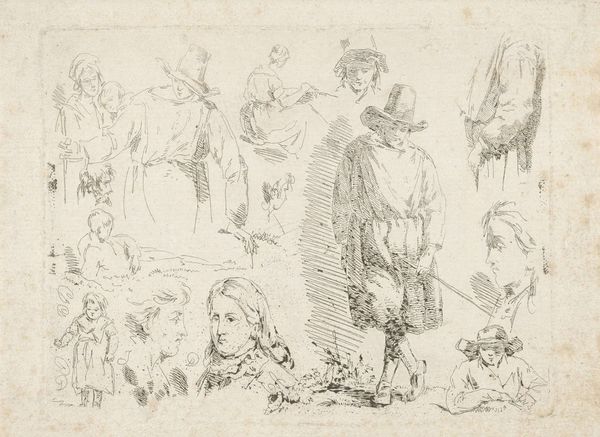
Sheet of Studies of Pilgrims and Monks c. mid 19th century
0:00
0:00
drawing, ink, pen
#
drawing
#
figuration
#
ink
#
france
#
pen
#
genre-painting
#
academic-art
Dimensions: 5 1/2 × 8 3/4 in. (14 × 22.2 cm)
Copyright: Public Domain
Editor: This is "Sheet of Studies of Pilgrims and Monks" by Adrien Dauzats, circa mid-19th century. It's a pen and ink drawing. I find it interesting how these figures seem almost sketched in preparation for a larger work. What stands out to you? Curator: I notice first the sheer labor involved. Each figure, quickly rendered as it may appear, represents a careful consideration of form and costume. Look at the pen strokes—the artist uses varying pressure to delineate folds in fabric and shadows. This wasn't just a quick doodle; it was a study, a focused examination of materiality through the clothing and implied social roles. The figures even have the clothing turned upside down, suggesting a repetitive mode of production. Editor: That's interesting. I hadn’t considered the implications of labor. So, the different groupings and orientations on the page – what does that signify? Curator: It’s less about aesthetic composition and more about efficient use of materials and space, typical for a workshop environment. The act of repetitive sketching also democratizes artistic creation; art becomes process-oriented with studies on material culture instead of focusing solely on symbolic representation. Even this specific selection – pilgrims and monks – suggests engagement with religious institutions, either through commission or critique. Editor: I see your point. It shifts my understanding of it completely, making it seem less academic and more of an exercise or even something bordering craft? Curator: Exactly! By focusing on the production process, Dauzats seems less interested in presenting grand narratives than in the act of observing and documenting the material realities of the social types surrounding him. Think of the role of religious institutions within 19th century French society and how this artist fits within, consuming or producing labor for them. Editor: That definitely provides a new way of seeing this piece! Now I see it less as just a preliminary sketch and more as documentation of Dauzats’ world, and of a production process as well. Thanks!
Comments
minneapolisinstituteofart almost 2 years ago
⋮
Adrien Dauzats was a prolific travel illustrator who worked with authors and government officials to document their voyages. He was known for the accuracy of his images. Though most of his travel occured during the 1820s and 30s, he continued to use drawings made in those years for decades thereafter. These sketches of pilgrims and monks are based on observations made in Spain during the 1830s, probably while he was travelling with Baron Isidore Taylor (1789-1879), one of France's most active travel writers of the era. The pilgrims are dressed for protection from the elements--some have blankets thrown over their shoulders, and some have cloths tied over their heads. One man carries a staff. Some of the figures kneel, some gaze upwards at some sight, and others sit resting on stone benches, stairsteps, or the ground. Monks with tonsures (partially shaven heads) talk to one another and to the pilgrims. Long after he stopped travelling, Dauzats continued to produce works that reflected his knowledge of foreign countries. His use of tracing paper for these sketches, suggests that this is a drawing derived from one or more earlier groups of studies. Since the paper is transluscent, he could easily flip the sketches to use their mirror images in developing new compositions.
Join the conversation
Join millions of artists and users on Artera today and experience the ultimate creative platform.
